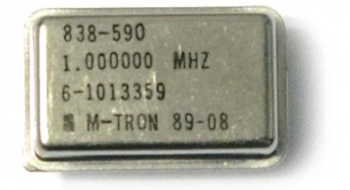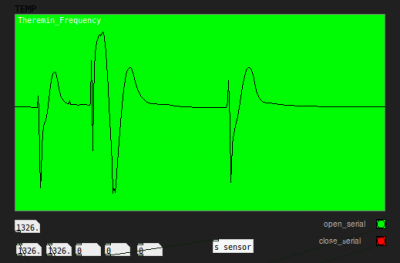Wild openQCM
Astrophysistis from Novaetech S.r.l. made open hardware a quartz crystal microbalance - http://openqcm.com/
"QCM could be used as a tunable gas sensor and for monitoring the aerosol deposition in ambient conditions. The applications in liquid environment show enormous potentiality. QCM is very effective in measuring binding events on functionalized surface, such as antigen-antibody binding and protein-protein interactions. It is a powerful tool in life sciences, being able to sense DNA hybridization and specific drug compounds."
if you know how to make thin film deposition... (not part of the open project)
The website provides a download for the software, electronics and 3D printed parts as well as some information and nice pictures on the technology...
Contents
- 1 General Info about QCM
- 2 Version 0.4 new design with 2nd crystal and drivers
- 3 Version 0.3 instant prototyping in GaudiLabs
- 4 Version 0.2 during #GynePunk Remote Node
- 5 DIY Build
- 6 Discussions
- 7 Conclusion
- 8 some background about bioactive surface coatings
- 9 Fibre optic surface plasmon resonance sensor
General Info about QCM
Version 0.4 new design with 2nd crystal and drivers
Experiments with coating it with a thin polyacrylate layer (also known as nail-polish)... and electro-plating the sensors with gold.
Version 0.3 instant prototyping in GaudiLabs
Combine the minimal circuit for heterodyning and a laser cut crystal holder / flow-chamber onto one board. connect it to your arduino or sound system and hear the molecules interact!
More soon...
Version 0.2 during #GynePunk Remote Node
During the BioAutonomy#Remote_Node_Helvetia we have been developing further our experiments with the DIY Wild Open QCM
Attaching the Quartz-crystal oscillator to the Open Theremin to make the measurements audible and much faster frequency read-out.
See a video here: https://instagram.com/p/2WEet6Gak6/
First Experiments, Theremin QCM - heterodyning !
See a video here: https://instagram.com/p/2WEet6Gak6/
The software we used to measure the frequency in earlier experiments, also the same as the OpenQCM, is using the FreqCount Library, although it's working very well, the measurement to count the frequency takes... 1 sec! so the data upgrade rate is pretty slow.
Using the Open Theremin circuit we can massively improve that data reading rate by heterodyining, also called frequency conversion, the oscillator frequency with another fixed oscillator, creating a very low frequency, which is first of all audible! and also much faster to read by using the FreqMeasure Library from pjrc.
One issue with the current code (just using the example from the library with serialWrite) is that the data update speed is still depending on the measured frequency. we are measuring 1 single phaselenght (msec) and averaging 30 times. so at around 500Hz the data speed is approx 15 datapoints/sec. this can easily be improved by adding a timing code to the software and optimized by using a smaller averaging speed for faster read-outs.
Instead of the Theremin circuit this heterodying and mixing/amplification circuit from a bat detector should do the trick. Instead of the 4046 oscillator we could also try to use another crystal oscillator, but i don't know how to tune the frequency of such.
Muuuuuch better with stable power supply
Urs made a nice and super simple new setup:
- Mounting/souldering the Quartz on a PCB
- attaching some screws at the right height
-
glueing an o-ring usingnot needed. - cutting and drilling a cover piece from acrylic
- making small holes to attach tubes and create a flow chamber
- gluing the tubes with PDMS
- done
New Setup and experiments
With the new setup we could finally make some more controlled experiments. We played around with the following liquids:
- deionized water
- Ethanol
- 10mM PBS + 1% albumin
- diluted 10x, 100x of PBS-albumin
- dusjagr's pee
The first results were still very noisy, but interesting. The flow chamber seems to work and is water tight. But where does the noise come from?
Plugging it in!
Just by pluggin in the arduino to an external 12V power supply we completely removed the noise. Supply voltage stability seems to be key!!!
The readout range dislayed in the pics below is about 100Hz readout from the theremin circuit using the FreqMeasure Library from pjrc, sending the data via arduino to dusjagr's puredata patch.
What is happening here? Hmmm difficult to say. The readouts are very clear, but we might follow quite unspecific surface reactions between the water and the crystal surface / silver electrodes.
DIY Build
lets build one - see if I find all the materials needed in my lab or stores around the corner (highest level open hardware check).
The crucial part beeing the quartz crystal oscillator Ryan George contributed the perfect hack: "you could always take the crystal out of a timer..."
| quartz crystal oscillator
ahh, you can also buy the sensor from the openQCM store for 14 euro... reasonable.
| Fun With Crystal Oscillators
Choose an oscillator like this, openQCM uses frequencies of 6MHz and 10Mhz. You can get them here for 0.60-1.00 € reichelt.de

I did it. Never knew what was inside these devices - amazing hack.

We just need to find an easy way to open that little can. Maybe can be kept as housing with drilling two holes for gas in and outlets...

Downloaded 3D files, electronics, BOM, Software. Everything here and looks ok. 3D files are not design for simple 3D Printer (lot of overhang) some simple laser cut parts would be better... Overall the project looks quite straight forward and the source files are easy to find and of good quality. Naaice.

While the 3D printer is printing the case, lets run the openQCM software from an arduino UNO with the hacked sensor...
Download and install is easy, you need to install the | FreqMeasure Library in your arduino library folder.
depending on what board you have the frequence (sensor, SIG) input pin changes, see list on FreqMessure site. For Arduino UNO it is pin 5.

Power to the oscillator and connect output pin 3 to arduino pin 5. Start the openQCM software and here we go...

Hit connect and search for port in the bottom right of the openQCM viewer.
Result when spitting on the sensor - is this what I am supposed to get...

Discussions
http://piratepad.net/QCM-filisofi
Conclusion
So far, quite easy hack. Did it in less than 2 hours with only material from the Lab. The temperature sensor can be connected to analog pin A1 of the arduino - did not get any reading from this, hmm...? Maybe make a nice bread board setup, find an easy way to connect tubes. All other (3D printed) parts Beigemüse.
Guess now we need some bioactive coating...
some background about bioactive surface coatings
My slides about the topic, partly in german:
And a great overview of the field
Kasemo, Bengt. 2002. “Biological Surface Science.” Surface Science 500 (March): 656–77. doi:10.1016/S0039-6028(01)01809-X.
File:kasemo_2002_biological_surface_science.pdf
Video from q-sense
Fibre optic surface plasmon resonance sensor
[feel free to put this in a better place ] Fibre optic surface plasmon resonance sensor system designed for smartphones Kort Bremer1,* and Bernhard Roth 1 Hanover Centre for Optical Technologies (HOT), Leibniz University Hannover, Nienburger Straße 17, 30167 Hannover, Germany * Kort.Bremer@hot.uni-hannover.de
A fibre optic surface plasmon resonance (SPR) sensor system for
smartphones is reported, for the first time. The sensor was fabricated by
using an easy-to-implement silver coating technique and by polishing both
ends of a 400 µm optical fibre to obtain 45° end-faces. For excitation and
interrogation of the SPR sensor system the flash-light and camera at the
back side of the smartphone were employed, respectively. Consequently, no
external electrical components are required for the operation of the sensor
system developed. In a first application example a refractive index sensor
was realised. The performance of the SPR sensor system was demonstrated
by using different volume concentrations of glycerol solution. A sensitivity
of 5.96·10−4 refractive index units (RIU)/pixel was obtained for a refractive
index (RI) range from 1.33 to 1.36. In future implementations the reported
sensor system could be integrated in a cover of a smartphone or used as a
low-cost, portable point-of-care diagnostic platform. Consequently it offers
the potential of monitoring a large variety of environmental or point-of-care
parameters in combination with smartphones.








